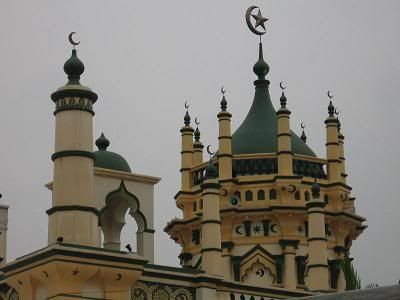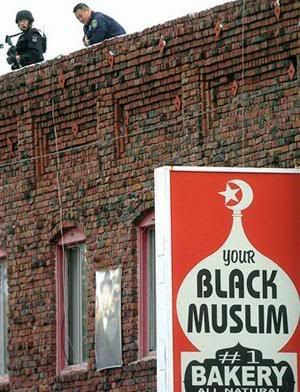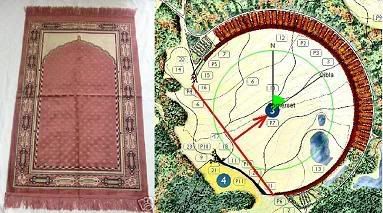Other maritime reading: Maritime Monday 95 for today (or when you find this).
———————————————-
It’s about connections. Several months back, in October to be exact, one of the people highlighted in this series was RM3/c Otis Dennis, an early hero of the Pacific, who had a DE named for him, that was a player in the Battle off Samar. Then I got a comment from Otis’ nephew, Don Dennis, who pointed me to the family website, which also contains a wealth of information of Otis’ wartime service, but also that of his pilot, who perished with him, LTjg Carleton Fogg, USN, and some detailed historical records from the USS ENTERPRISE (CV-6) and the squadrons who flew from her by CAPT “Dusty” Kleiss, USN (Ret).
And that site is a massive compilation of family history, reaching back into the times of WWII with the story of one of the families who were captured (all of them) by the Japanese in the Philippines.
That being said, today I will cover the story of LTjg Fogg and his floating legacy.

From the Dennis Family site, the only place I found significant detail about the life of Carleton Fogg:
Lieutenant (j.g.) Carleton Thayer Fogg, U.S. Navy
Received from the U.S. Navy Archives
Lieutenant (j.g.) Carleton Thayer Fogg was born in Lynn, Massachusetts on August 19, 1917 and died February 1, 1942 in the Pacific area (Roi Island, Kwajalein Atoll) from enemy action (Japanese attack).
On October 6, 1937, he enlisted in the U.S. Naval Reserve and from 15th to November 13, 1937 he was on active duty and was discharged on December 21, 1937.
On December 10, 1937, he was appointed Aviation Cadet, U.S. Naval Reserve, from December 3, 1937 and accepted appointment and executed oath on December 21st. He was assigned to active duty for training involving flying at the Naval Air Station, Pensacola, Florida, on the 10th of December and detached on January 7, 1939, and assigned to the Scouting Squadron Two USS SARATOGA for temporary active duty involving flying, reporting on February 23, 1939. He was detached from this duty on June 14, 1939 and assigned to the Scouting Squadron Seventy-one (USS WASP) for active duty involving flying.
He was appointed Ensign for Aviation duties, US Volunteer Reserve, from January 1, 1939 and accepted the appointment and executed oath of office on August 19th. On September 11, 1939, assigned to Scouting Squadron Six USS ENTERPRISE to active duty involving flying. Commissioned Ensign, U.S. Navy, from June 1, 1939 and on March 28th, accepted the appointment and executed oath of office. On December 13th, appointed Lieutenant (j.g.) for temporary service to rank from November 1, 1941 and accepted on January 7, 1942.
The President of the United States takes pleasure in presenting the AIR MEDAL posthumously to Lieutenant (j.g.) Carleton T. Fogg, U.S.N. for service as set forth in the following:
CITATION:
“For meritorious conduct in aerial flight while in action with the enemy. As a member of a Scouting Squadron he participated in the initial attack on Kwajelein Atoll, Marshall Islands on February 1, 1942, which was executed in the face of enemy fighter opposition and heavy anti-aircraft fire. He pressed home his attack in a determined manner and contributed to the damage to enemy installation on Roi Island. He gallantly gave up his life in the service of his country. His conduct throughout was in accordance with the best traditions of the Naval Service.”
LTjg Fogg and RM3/c Dennis flew a Dauntless dive bomber. This is a drawing of theirs:

LTjg Fogg was overhead Pearl Harbor on Dec 7th, 1941, and this is his after action report:
Pearl Harbor Report of ENS C. T. Fogg – 7 December 1941
from USS Enterprise CV-6
SCOUTING SQUADRON SIX
U. S. S. ENTERPRISE
At Sea
14 December, 1941
From: Ensign C. T. FOGG, USN, (Pilot of 6-S-11).
To: The Commander, Scouting Squadron SIX.
Subject: Report of Action with Japanese on Oahu on 7 December, 1941.
Reference: (a) Art. 874 U.S. Navy Regs.
1.
I completed my scouting sector with no contacts and proceeded to Oahu, arriving over Barbers Point at about 0840. I flew towards Pearl Harbor and got as far as Ewa Field before I realized fully that Oahu had been bombed. I immediately turned back towards Barbers Point and rendezvoused with five other Scouting Squadron SIX planes who had completed search. This group was lead by Lieutenant W. E. Gallaher, USN. After circling at sea for an indefinite time we sighted two large groups of enemy aircraft rendezvousing about 20 miles south of Barbers Point. After reporting them, we attempted to land at Ford Island but were mistaken for enemy and fired upon by own anti-aircraft. The formation broke and I turned back and landed at Ewa Field. Damage to my plane was slight, only a hole in the main spar of my right wing and another in my tail surfaces. At Ewa Field I found that they had suffered two strafing attacks and that all aircraft but two (2) F4F’s had been destroyed by incendiary bullets. Personnel casualties were light, approximately three dead and eight to twelve seriously wounded.
2.
I remained at Ewa Field by direction of Wheeler Control until about 1000 the next day (Monday) when I took off and proceeded to Ford Island by orders from Patrol Wing TWO Operations Officer.
(Signed) C. T. FOGG

In honor of his sacrifice, the USS FOGG (DE-57), a ship of the
BUCKLEY Class destroyer escorts, was named fro Carleton Fogg and was commissioned on July 7th, 1943, with his mother as the ship’s sponsor.Here is what history I could find on FOGG’s operational record at the
Dictinary of American Fighting Ships:
Fogg’s first cruise on convoy duty began with her departure from New York 13 October 1943. She escorted unladen tankers to Aruba and Curacao in the Netherlands West Indies, crossed to Algiers guarding loaded tankers, then returned by way of Curacao and Trinidad to New York 4 December 1943. Between 26 December 1943 and 20 August 1944, she made six escort voyages from New York to Londonderry and Lisahally, North Ireland, guarding the flow of men and material which made possible the invasion of Europe and the push across the continent which followed.
The escort put to sea once more from New York 12 September 1944, to escort a convoy through the English Channel to Cherbourg, France, then called at Portsmouth, England, before returning to New York 9 October for a brief overhaul. After special training at Charleston, she sailed 6 November to escort a slow towing convoy to England and back. Homeward bound, on 20 December, one of the LSTs in the convoy was torpedoed, and as Fogg began to search for the submarine, she, too, was torpedoed. Four of her men were killed and two wounded, and the ship badly damaged [losing the rear third of the ship, breaking off just aft of the Engine Room #2 bulkhead]. For two days the crew fought to save their ship, but when on 22 December the stern sheared off, all but a skeleton crew were taken off. These men restored buoyancy, and Fogg reached the Azores in tow the next day. A first attempt to tow her back to the United States failed when bad weather tore away the temporary bulkheads replacing the stern but she at last arrived at Boston for repairs 9 March 1945.
After refresher training, Fogg sailed out of Norfolk between 2 and 30 June 1945, acting as target ship in battle problems with a cruiser, serving as plane guard for a carrier, and training men in combat information center duty. On l July, she entered Philadelphia Naval Shipyard for conversion to a radar picket, which was completed 2 October. Duty along the east coast and in the Caribbean, primarily in antisubmarine warfare development and as combat information center school ship, continued until 26 July 1947, when she arrived at Charleston, S.C. There, Fogg was decommissioned and placed in reserve 27 October 1947.
There is a note on the Dennis site indicating a 2 volume book titled “History of USS FOGG DE-57” by Salvatore J. DiMilla was written. It appears the book can be found at the East Carolina University Special Collections. I suspect it has plenty of information on DE ops in WWII.
I close with an excerpt from the memorial service for LTjg Carleton Fogg, held at his alma mater the North Yarmouth Acaemy:
[…]
What man, whatever his need, can grouse and grumble at the rationing of rubber when his friend has made the supreme contribution; what civilian club-room admiral or barbershop general can revise and rearrange with his pitiful HALF-information battle lines, worldwide in their extent, entered by his neighbor who, like a brigade famous in history, knew and acted upon the military axiom “Theirs not to reason why, theirs but to DO, – and die!”?
[…]
Good advise for all time? I think so.
The credit for this posts detail goes to the families of Otis Dennis and Carleton Fogg for taking the time and effort to collect and organize a tremendous amount of history.




















